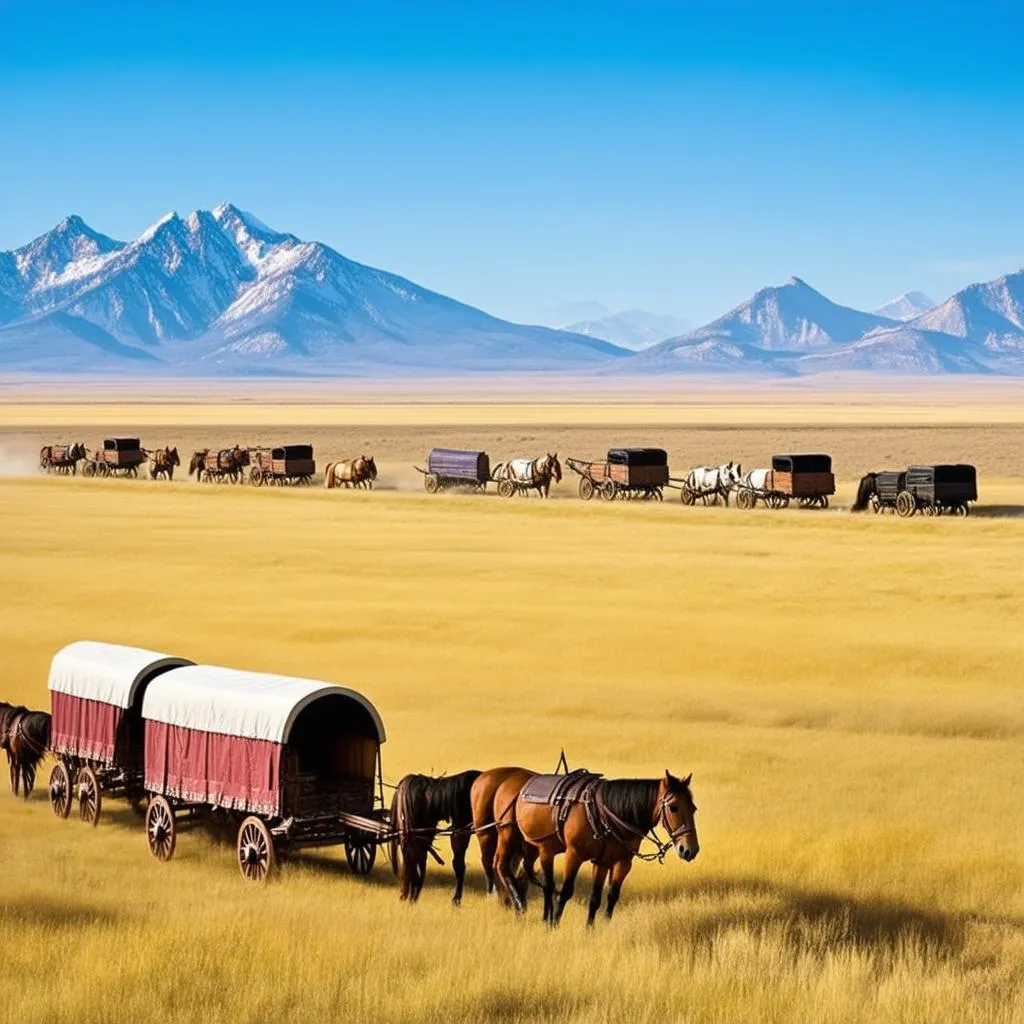The vast expanse of the Great Plains, stretching from the Mississippi River to the Rocky Mountains, was once seen as a formidable barrier, a “Great American Desert” to be traversed only by the bravest souls. So why did Americans first decide to cross this seemingly desolate land? The answer lies in a complex web of motivations, ranging from the allure of economic opportunity to the spirit of Manifest Destiny.
The Lure of Opportunity and Adventure
Imagine the year is 1804. The Louisiana Purchase has just doubled the size of the young United States, but much of this new territory remains a mystery. Driven by a spirit of adventure, explorers like Lewis and Clark set out to chart this unknown land, mapping rivers, documenting flora and fauna, and establishing relationships with Native American tribes.
 Lewis and Clark Expedition
Lewis and Clark Expedition
Their tales of fertile land and new possibilities ignited the imaginations of many. Soon, fur trappers and traders followed in their footsteps, eager to capitalize on the abundant beaver pelts and establish new trade routes. These mountain men, like Jim Bridger and Jedediah Smith, became the quintessential frontiersmen, paving the way for future settlers.
Manifest Destiny and the Drive Westward
By the mid-19th century, the concept of “Manifest Destiny” had taken root in the American psyche. This belief held that the United States was destined by God to expand its dominion across the entire continent, bringing with it the blessings of democracy and civilization. This ideology, fueled by nationalism and economic ambition, spurred a mass migration westward.
 Covered Wagon on the Oregon Trail
Covered Wagon on the Oregon Trail
The discovery of gold in California in 1848 further accelerated this westward movement. The California Gold Rush saw thousands of fortune seekers, known as “forty-niners,” brave the treacherous journey across the Great Plains, hoping to strike it rich.
Trails of Tears and Triumphs
The westward expansion wasn’t without its dark side. The Oregon, Santa Fe, and Mormon Trails, while paths to new beginnings for many, also represented displacement and hardship for Native American tribes. The forced removal of the Cherokee Nation from their ancestral lands in the Southeast, known as the Trail of Tears, stands as a stark reminder of the human cost of this westward push.
FAQ: Unpacking the Westward Movement
Q: What were the biggest challenges faced by those who traveled across the Great Plains?
A: The journey was fraught with danger. Travelers faced harsh weather conditions, limited access to food and water, disease, and conflicts with Native American tribes.
Q: What role did the transcontinental railroad play in the settlement of the West?
A: The completion of the transcontinental railroad in 1869 revolutionized travel across the Great Plains, making it faster, safer, and more affordable. This led to a surge in westward migration and the rapid development of the region.
Q: Where can I learn more about the history of westward expansion?
A: For a comprehensive look at the trails and stories of westward expansion, consider visiting a National Historic Trail site or explore the resources available on travelcar.edu.vn, where you’ll find information on historic destinations across the country.
Travelcar.edu.vn: Your Guide to Exploring History
The legacy of westward expansion is etched into the landscape and culture of the American West. From the iconic landmarks of the Oregon Trail to the vibrant cities that rose from the plains, the stories of those who ventured across this vast land continue to captivate us today.
Visit travelcar.edu.vn to discover more about these historic destinations and plan your own journey through American history.